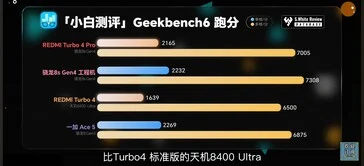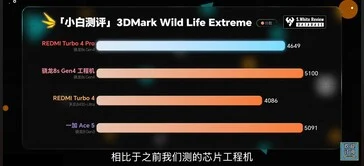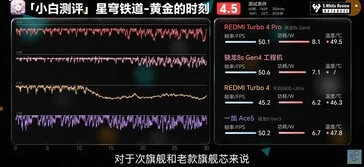Key Takeaways
1. The Snapdragon 8s Gen 4 was recently introduced and is featured in the Redmi Turbo 4 Pro as its first smartphone application.
2. The Redmi Turbo 4 Pro achieved notable benchmark scores: 2,165 (single-core) and 7,005 (multi-core) on Geekbench 6, and 2,216,228 on AnTuTu.
3. Compared to Qualcomm’s QRD device, the Redmi Turbo 4 Pro shows slightly lower performance, which is expected due to the QRD being optimized for peak performance.
4. The Snapdragon 8s Gen 4 in the Redmi Turbo 4 Pro generally lags behind many Snapdragon 8 Gen 3 devices, except in the multi-core Geekbench 6 test.
5. In real-world usage, the Snapdragon 8s Gen 4 competes well with the Snapdragon 8 Gen 3 in demanding games.
Qualcomm introduced the Snapdragon 8s Gen 4 about four weeks ago. Although the benchmarks from the chipset in the QRD device have given us a glimpse of its capabilities, the Redmi Turbo 4 Pro stands out as the first smartphone equipped with this new SoC and has been put to the test prior to its official launch.
Performance Scores
According to Xiaobai’s Tech Reviews, the Redmi Turbo 4 Pro achieved a single-core score of 2,165 on Geekbench 6 and a multi-core score of 7,005. In AnTuTu, the smartphone scored an impressive 2,216,228. For graphics performance, the Redmi Turbo 4 Pro secured a score of 4,619 on 3DMark’s WildLife Extreme test.
Comparison with QRD Device
When compared to Qualcomm’s QRD engineering device, the Redmi Turbo 4 Pro shows slightly lower performance. This is expected, as the QRD device often represents the peak performance scenario. As a result, the Snapdragon 8s Gen 4 in the Redmi Turbo 4 lags behind many Snapdragon 8 Gen 3 devices we’ve assessed, with the exception of the multi-core test on Geekbench 6.
Real-World Usage
Nonetheless, practical performance is another story entirely, and the Snapdragon 8s Gen 4 is capable of competing with the Snapdragon 8 Gen 3 in numerous demanding games.
Source:
Link






Leave a Reply